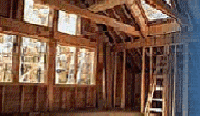Houston - Galveston Coastal Home Inspections I Infrared Thermography |
||
 |
|||
 |
|||
 |
|||
 |
|||||||||
Dangerous Electrical Breaker Panels Dangerous or faulty electrical breaker panels are still very much commonplace in the Houston/Galveston regions. We see them on homes that were previously inspected by some independent inspector.
• Federal Pacific Electric (FPE) - "Stab-Lok" Breakers. There is not a competant inspector on the planet earth that doesn't know about FPE panels. These panels are so dangerous we will not remove the face cover as they may be held in place by the face cover and pop out if the cover is removed. Not good. Information on FPE's ... click here • Zinsco Electric (Panel and Breakers) and Sylvania • Challener Electrical Panels .. click here • Bulldog & ITE Pushmatic • Westinghouse Panels ...https://www.youtube.com/watch?v=NCqGjqoc_Ts |
|||||||||
Dangerous Electrical Corrosion If you live on the Gulf Coast or the Bay you should check for corrosion inside ANY electrical panel that would exacerbate a fire. You can never be sure if your home inspector actually removed the face cover to inspect as he is required to. We show every client what we see so there is never a question. We even take photos in order to be clear in our reporting for your behalf. Every year you should inspect the panel for corrosion. I have seen brand new installed panels with corrosion that is not allowed by the National Electric Code. Electrician Licensing The state of Texas did not require state licensing of electricians until 2005 and then "grandfathered" them in. |
|||||||||
ICC/IRC Combination Code Certified R5 Inspector - 5188826 County (IRC) Building Inspections - Texas HB2833 Texas Real Estate Commission Texas Real Estate Commission Texas Professional Real Estate Inspectors Association #435 -MI Coastal Inspections; Bulkheads, Piers, Docks, Boat Houses InterNACHI - Certified Home Energy Inspector |
|||||||||

"Don't worry honey, it's a 30 year roof". Wrong!
When a home is built the usual builder has a one-year warranty. That includes the roof. The roof covering manufacturer does not warrant the installation or for roof leaks. If someone makes such a claim then they are usually trying to sell you something. Shingles do not have manufacturer tags or markings on them. Who are you going to call anyway? Additionally, roof contractors are not licensed in Texas. Anyone can be one today and gone tomorrow.
Welcome to the southern United States hot/humid climate. Generally, asphalt (composition) shingles have a typical lifespan of 12-15 years in hot/humid environments and regardless of its material age and condition insurance companies tend to have their own idea of shortened lifespan when it comes to insurability and/or depreciation. With lack of proper attic ventilation you can take off 3-5 years of estimated life and lack of proper ventilation voids any manufacturer material warranty.
From Dallas to Galveston, El Paso to Beaumont many home inspectors may spend an hour and a half on a home when it should take around 4 hours or so to properrly follow the statewide inspection standards. These inspection flippers usually do not want you at the inspection and the experienced inspectors know why. Whether they own a ladder or even use one is questionable. At least reputable inspectors will include roof photos in a report as documentation that they were on the roof.
If you live in a coastal Texas county then you have the added Texas Windstorm Insurance Association that, if you watch the news, may be somewhat evil when it comes to paying windstorm claims even on new roofs. Roofs blow off in high wind zones. Shinges are not listed/rated/warranted for high windspeeds. (Shingles in coastal area may be limited to 110 m.p.h. speeds based on a 3 second gust. If you live in a 120 or 130 wind zone then you exceed the shingle listing/rating/warranty.)
What wears out the composition shingle? The actual life of a composition roof will vary, depending on a number of interrelated factors besides the quality of the material and the method of installation such as but not limited to; exposure to sunlight, slope of the roof, ventilation of attic spaces, and color of the shingles; (dark shingles achieve lower life spans) and biological attacks. Dark shingles have a significant amount of thermal mass. They soak up the sun’s heat. The darker the shingle the hotter the roof gets.
Additionally the thicker the composition shingle the more heat it absorbs and stores and is negatively affected by this heat. This means that not only do they soak up the sun’s heat like a sponge, but they also hold a tremendous amount of this heat to after sunset and then release this heat into the structure at night. Testing done by Florida Solar Energy Center showed that over 20% of the typical home cooling load comes from heat gain. The average 2000 sq. ft. roof can receive over 24 million BTUs of the sun’s radiant heat per year. (That equals 2,000 tons of air-conditioning!)
Additionaly with dark colored shingles the minimum standard of attempting to ventilate (i.e. cool down) an attic space and rood deck may be unrealistic which has a shortening effect on shingle life.
Granule loss of shingles starts from the time of installation and increases with age from heat and erosion from water running down the roof slope. The granules are designed to deflect the deteriorating ultra-violet rays of the sun and heat and provide a fire-resistance. The fire-resistance of shingles decreases with the rate of granule loss. Roof rock granule loss, exposed fiberglass matrix at edges and brittleness of the roof covering is indicative of the roof covering in its last stage of serviceable life and you are recommended to budget for replacement.
